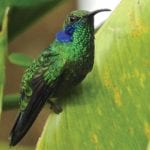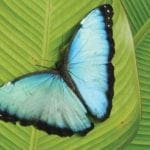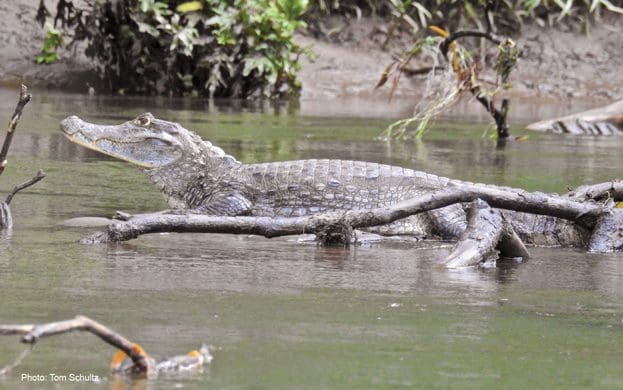
Ecotourist Road Trip: Sarapiquí Rafting, Rainforest Adventures and Wildlife
A Road Trip to Sarapiquí: The Other Side of the Mountain
Sarapiquí is an ecotourist’s dream — a vast expanse of tropical rainforest teeming with animals, bursting with vegetation and mercifully spared from the mega resorts and hordes of tourists found in many parts of Costa Rica. It’s renowned for its unspoiled forests, wild rivers and environmentally friendly ecolodges.
Situated northeast of the Central Valley, the canton of Sarapiquí is not as well known as Guanacaste, Arenal, Monteverde, Manuel Antonio or even the Osa Peninsula, except among knowledgeable whitewater rafters and serious jungle researchers. It has in recent years become more popular, especially as a day trip or weekend destination for people in the Central Valley.
Sarapiquí: There is much
to see and do in this
northernmost part of the province.
BIRDING SPOT
We had heard there is surprisingly much to see and do in this northernmost part of the province of Heredia, so we set out on a grand circle tour that took both roads to and from Sarapiquí.
Leaving the always overcrowded highways of San José and Heredia, we drove north through the increasingly open and less crowded towns on route 126, which cuts between the Poás and Barva volcanoes. At the bottom of the La Paz Waterfall is a new and rather ugly bridge, which along with the scars on the mountain slopes is a reminder of the terrible 2009 earthquake that destroyed this area, killing at least 34 and leaving some 64 people missing.
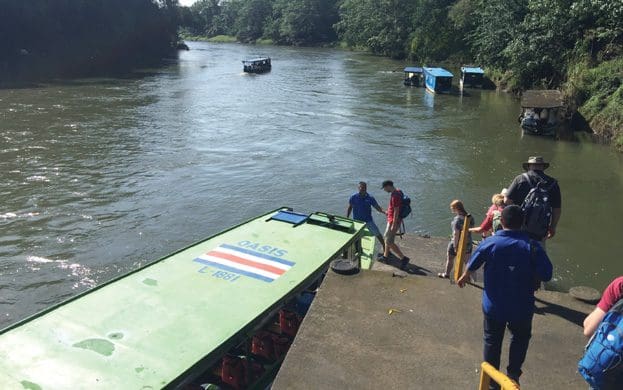
Near the top of the rise we stopped, and you should too, at the Cinchona Café Colibrí. The current structure is rebuilt on what was left after it was destroyed in the earthquake. The family that owns the restaurant has for many years put out hummingbird and fruit feeders, and the spot has become renowned in birding circles.
From there we started the long descent to the plains of Sarapiquí. The road roughly follows the border between Alajuela and Heredia provinces and the Sarapiquí River, which forms in the heights of Poás and gives the area its name. Looming to our right and covering almost all of southern Sarapiquí and the Barva Volcano is Braulio Carrillo National Park.
We continued to drop out of the mountains on the Caribbean slope and entered the La Virgen section of Sarapiquí, where the region’s first big attraction is located — rafting and kayaking. Sarapiquí rafting offers the moderate Class III rapids and is ideal for novices and families. Sarapiquí rafting offers plenty of opportunity for wildlife viewing on the calm stretches between thrilling rapids.
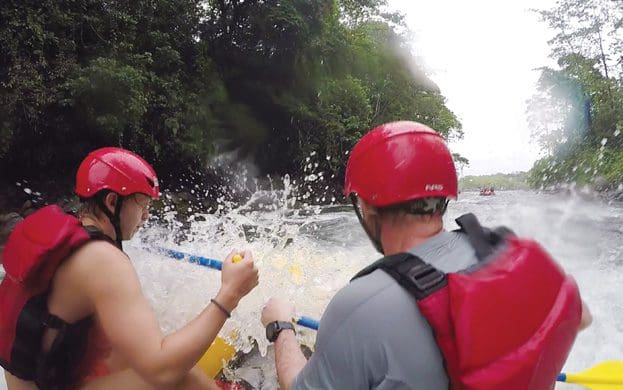
There are several operators to choose from. If you want to make this the end of your first day in Sarapiquí, And many wonderful lodging experiences.
The next day we continued up through La Virgen and headed toward Puerto Viejo de Sarapiquí (not to be confused with the Puerto Viejo on the south Caribbean coast). Along the way we stopped at one of the more curious attractions in the area: Dave and Dave’s Nature Park. The father and son U.S. expats who own this small reserve have worked it for years, restoring the forests and promoting second-growth forests. They have an interesting story and a tour that is not quite like those you usually find: You sit, you talk, you walk the trails, you drink coffee, and you photograph Sarapiquí wildlife that you’d have a hard time seeing in other places. It’s a quirky and great way to spend a morning.
Sarapiquí is filled with
pineapple plantations.
We continued north to Chilamate, where Route 140 ends and Route 4 begins. It has very recently become an even more important intersection with the new Chilamate-Vuelta Kooper highway. Years in the making, it is to be a shortcut for trucks to pass from Limón to the northern border crossing at Los Chiles. It also provides a much faster trip to get to Sarapiquí from places like Upala to the west. It had just opened when we were there, but the first rains of the green season caused it to become something closer to the Costa Rica intercontinental ship canal. The drainage issues have reportedly since been corrected.
Now heading east on Route 4, we arrived at Puerto Viejo de Sarapiquí. The heat quickly made us realize we were not in the mountains anymore. In fact, as far inland as it is, Puerto Viejo de Sarapiquí is only about 40 meters above sea level.

Puerto Viejo de Sarapiquí is a functional town, not all that shiny or touristy, in the Northern Plains of Costa Rica. It’s hot, flat as a pancake and filled with pineapple plantations as far as the eye can see looking north and east. The Sarapiquí River continues north and empties into the Río San Juan, the border between Nicaragua and Costa Rica, which spills into the Caribbean. This has made the port a center for shipping bananas and pineapples since colonial times.
Great green macaws
Puerto Viejo de Sarapiquí is known for its rafting, but there are other reasons to go there. The huge expanse of Caribbean rainforests here provide the major attraction in this part of the country: the jungle and all its plants, insects, birds and mammals. This region is also home to the critically endangered great green macaw, which is found primarily in the northern part of the Caribbean coast. While its numbers are slowly increasing, the loss of habitat, mostly to agriculture, has made its recovery far less successful than its cousin, the scarlet macaw of the Pacific coast. Green macaws are rarely spotted in the wild.
There are a couple of way to experience the Caribbean rainforest. One is by boat on the smooth and calm Sarapiquí River. We had our two-hour tour arranged through our hotel, and the trip provided ample views of aquatic birds, crocodiles, peccaries, monkeys and other wildlife.
Another way to see this amazingly biodiverse area is to go to the largest and oldest attraction in the region: La Selva Biological Station. La Selva (“The Jungle”) is a large, functioning, research center run by the Organization for Tropical Studies. In operation since the 1960s, it is one of the most important and well-known research center in the world on tropical biology. You must call in advance and get reservations if you want to actually stay there alongside the scientists, or take a day or half-day trip to see the butterflies, insects, frogs, birds and plant life. To arrange a tour, click here. As birdwatchers, we focused on birds, but there are tours here of interest to all.
Pass at your peril
We continued east on Route 4 as it curved to the south around Barva Volcano and started our way back home. Route 4 ends in the infamous Route 32, the highway between San José and Limón. It’s probably our least favorite road in all of Costa Rica, so be careful and remember the movie “Death Race 2000” every time you come to a passing zone!
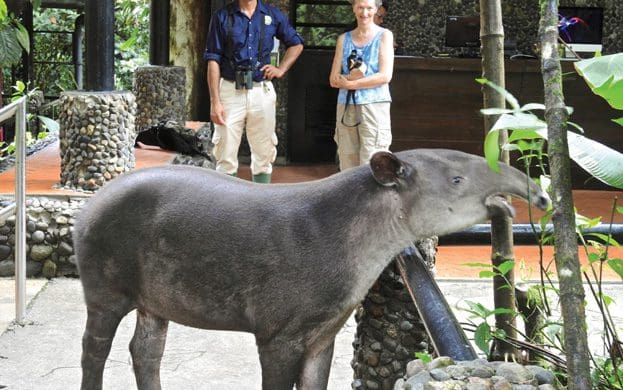
We decided to make one more detour to visit Rainforest Adventures. This is a one-stop shop for a jungle experience: hiking, ziplining, an aerial tram, guided birding tours, restaurant and huge gift shop. We were there on a weekday in the off season, so we had it almost to ourselves.
There is a lot to see there, but for us the highlight was seeing a mother and daughter tapir. The tapirs have been around for years and no longer fear humans, so you can get uncomfortably close to them. We were expecting a tapir to be the size of a small pig, not a hippopotamus.
We got back in the car and drove up over the mountain, with several scary death races, and crossed the border back into San José, completing our circumnavigation of Sarapiquí. We loved it. If you are looking for something off the beaten path and full of wonderful activities and prices that are reasonable, take a long weekend to explore Sarapiquí wildlife.









